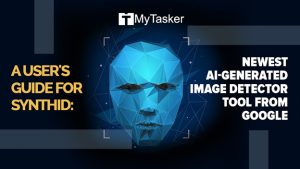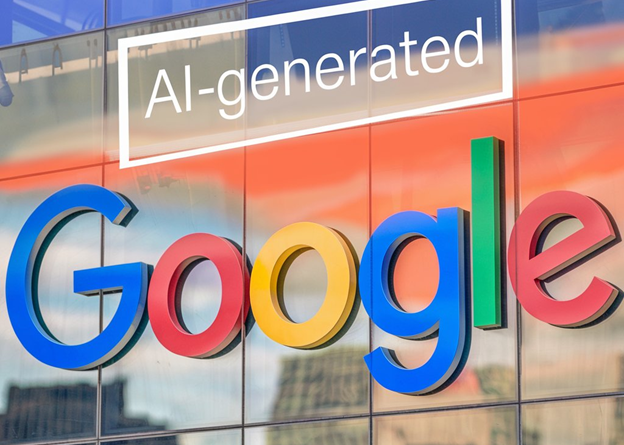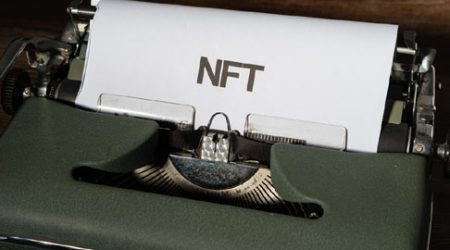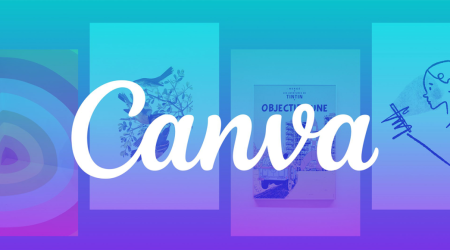Google Now Embeds Digital Watermarks in AI-Edited Images via Magic Editor
AI-Edited Images in Google Photos Will Feature Digital Watermarks
Google has announced a new feature that applies digital watermarks to images edited using AI in Google Photos. This update specifically impacts photos modified with the Reimagine tool in Magic Editor, currently available on Pixel 9 devices.
The primary goal of this watermarking system is to improve transparency, enabling users to differentiate between original and AI-edited images. As AI-driven editing tools become more advanced, concerns about misinformation and digital authenticity have increased. By introducing digital watermarking, Google aims to promote responsible AI usage in image editing.
Understanding the Reimagine Tool in Magic Editor
The Reimagine tool in Magic Editor is an AI-powered photo editing feature launched by Google in 2024. Unlike traditional editing tools that adjust colors or crop images, Reimagine allows for advanced AI modifications, including:

- Object Manipulation – Users can move or replace elements within an image to alter its composition.
- Lighting and Background Adjustments – AI enhances lighting conditions and modifies backgrounds for a professional finish.
- Object Removal and Replacement – Users can erase unwanted elements and replace them with AI-generated content.
Given the powerful nature of these tools, AI-edited images can sometimes be indistinguishable from real ones. This raises concerns about image authenticity, making digital watermarking a critical step toward maintaining trust in AI-generated content.

Why Digital Watermarking Matters
The rapid evolution of AI-generated content has made it increasingly difficult to distinguish between real and altered images. This challenge has fueled concerns over misinformation, deepfakes, and digital manipulation.
Experts in AI ethics and digital security emphasize the importance of a universal system to identify AI-edited content. Digital watermarking is emerging as a reliable solution, allowing users to verify image authenticity without altering the visual quality.
To address these concerns, Google has developed SynthID, an advanced digital watermarking technology created by DeepMind, Google’s AI research division.
How Google’s SynthID Works

SynthID is a cutting-edge watermarking system that embeds an invisible digital signature into AI-generated and AI-edited images. Unlike traditional watermarks, SynthID offers:
- Invisible Marking – The watermark does not affect image quality and remains imperceptible to the human eye.
- Persistent Detection – The embedded watermark remains detectable even after modifications.
- AI Verification – Google’s detection tools can scan images and verify if they were altered using AI.
Originally designed for AI-generated images, SynthID has now been expanded to AI-edited content in Magic Editor, reinforcing Google’s commitment to AI transparency.
Challenges and Limitations of AI Watermarking

While SynthID watermarking enhances digital transparency, it is not without limitations. Google has acknowledged several challenges:
- Minor Edits May Evade Detection Small modifications, such as subtle color changes, may not be detected by SynthID, allowing some AI-edited images to go unnoticed.
- Limited Effectiveness Outside Google’s Ecosystem SynthID watermarks work best within Google’s tools. When AI-edited images are shared on third-party platforms, watermark detection may be less effective.
- Potential for Removal Attempts Although SynthID is designed to resist tampering, sophisticated AI techniques could eventually develop ways to bypass or erase watermarks.
Despite these challenges, digital watermarking remains a crucial strategy for enhancing AI transparency and combating misinformation.
Google’s Commitment to AI Transparency

Google’s introduction of SynthID watermarking aligns with growing concerns about AI-generated misinformation. During the launch of the Pixel 9 Pro, users voiced concerns about AI-edited images lacking clear metadata indicators.
To address these concerns, Google has implemented two key solutions:
- SynthID Watermarking – AI-edited images will now include an invisible watermark for easy identification.
- Enhanced Metadata Details – Google Photos now provides more information in the “About This Image” section, helping users verify AI involvement in edits.
These initiatives aim to increase awareness and encourage responsible AI usage in digital image editing.
The Future of AI-Edited Image Detection

While SynthID watermarking is a significant step toward AI transparency, experts believe additional measures are needed to combat AI-generated misinformation effectively.
Future strategies may include:
- Metadata Tagging – Embedding AI edit details within image metadata for easier verification.
- Advanced AI Detection Tools – Developing algorithms capable of identifying subtle AI alterations.
- Blockchain-Based Verification – Implementing blockchain technology to create tamper-proof records of image authenticity.
As AI technology advances, ongoing innovation will be essential to ensure AI-generated content remains transparent, ethical, and trustworthy.
Conclusion
Google’s implementation of SynthID watermarking in Magic Editor represents a major step forward in AI transparency. With AI-powered editing tools becoming increasingly sophisticated, distinguishing between real and AI-altered images is more important than ever.
However, AI transparency remains an evolving challenge. While SynthID plays a crucial role, it should be combined with additional verification methods, including metadata tracking, AI detection tools, and responsible AI policies.
As AI-generated content continues to shape the digital world, companies like Google must continue innovating to ensure users can trust the authenticity of digital images.














Comments (8)
Mitolyn This is really interesting, You’re a very skilled blogger. I’ve joined your feed and look forward to seeking more of your magnificent post. Also, I’ve shared your site in my social networks!
I appreciate your support!
PrimeBiome This is my first time pay a quick visit at here and i am really happy to read everthing at one place
I’m glad you found everything in one place!
Tech dae Nice post. I learn something totally new and challenging on websites
Thanks! Learning something new is always exciting.
helloI like your writing very so much proportion we keep up a correspondence extra approximately your post on AOL I need an expert in this space to unravel my problem May be that is you Taking a look forward to see you
Hey! I appreciate your kind words — thank you! 😊